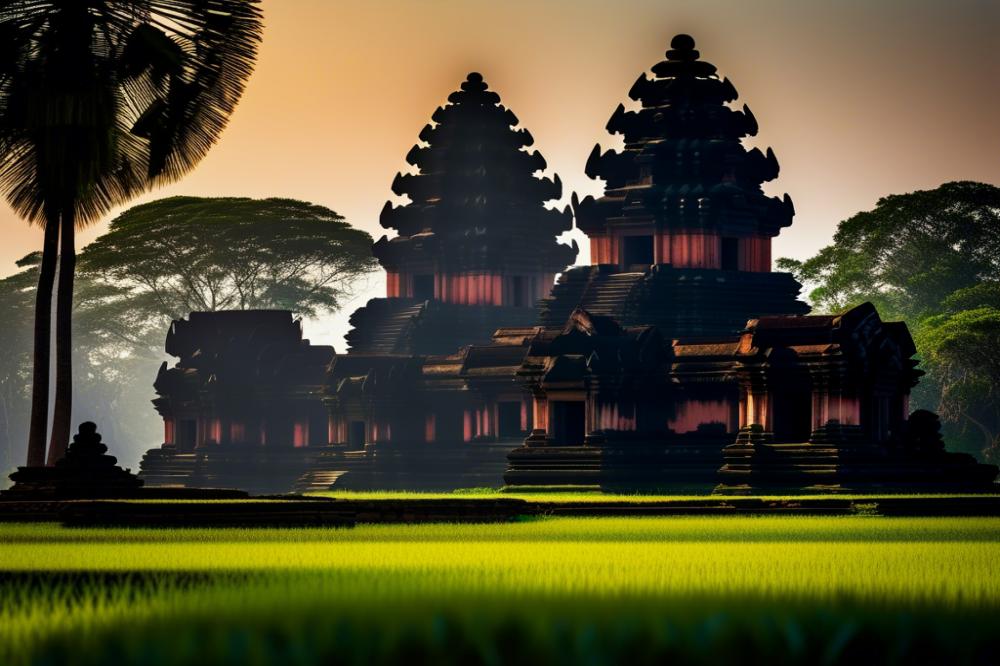Overview of the Roluos Group Temples
The Roluos Group Temples hold a significant place in Cambodia‘s rich history. These structures form one of the earliest temple complexes built during the Khmer Empire. Situated near Siem Reap, they serve as a reminder of the architectural prowess prevalent in ancient Cambodia.
Hindu temples like Bakong, Lolei, and Preah Ko stand as symbols of devotion and honor to Hindu deities. Each temple showcases intricate carvings and unique architectural designs. These sites provide crucial insight into the early development of religious architecture in the region.
The Roluos Temples are often linked to the famous Angkor Wat, which was constructed later. However, they represent an important phase in the evolution of Khmer temple architecture. Historians consider them as foundational to the future successes of Angkor’s monumental constructions.
These historical sites attract many visitors each year. Enthusiasts of archaeological tourism come to explore the grandeur of ancient architecture, helping to preserve the cultural heritage. Understanding the importance of these temples offers a deeper appreciation of Cambodia’s legacy and influence in Southeast Asia.
Historical Context
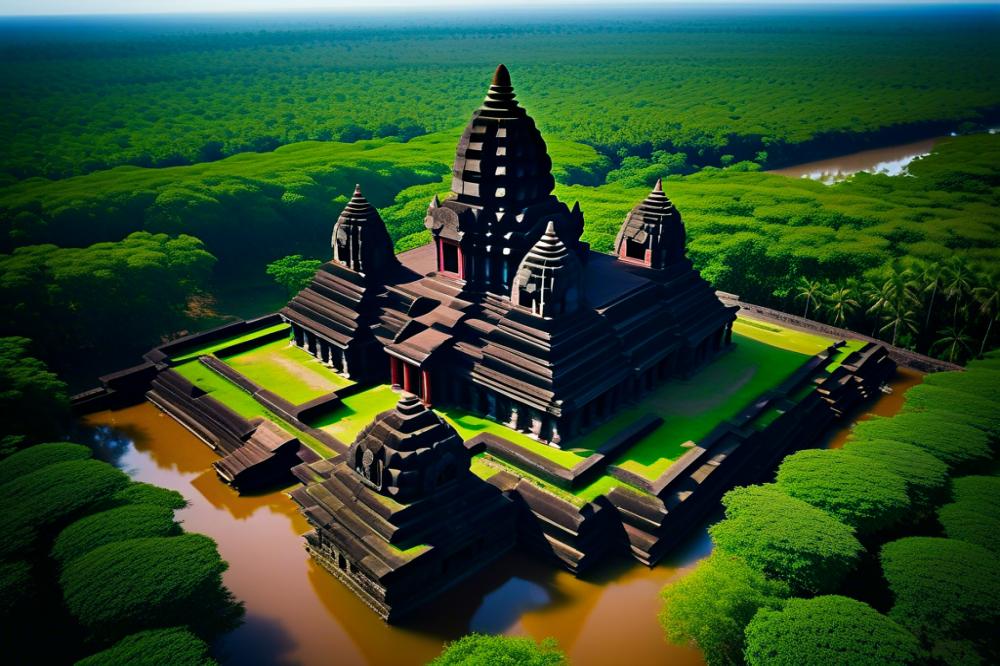
The Roluos Group Temples stand as a significant part of Cambodia’s rich history. Constructed during the Khmer Empire, these temples date back to the late 9th century. At that time, they served as the capital of the empire, known as Hariharalaya. This region flourished under King Jayavarman II, who is credited with establishing the foundations of Angkorian architecture.
Among the temples, Bakong is the most notable. This temple features a distinct pyramid shape and intricately carved sandstone. Designed as a Hindu temple, Bakong reflects the early characteristics of Khmer architectural style. The layout and construction techniques set a precedent for future temples, including the famous Angkor Wat.
Lolei, another temple in the complex, showcases brick construction. Built on an island in a now-drained reservoir, it originally stood in water. There are impressive carvings of Hindu deities inside, demonstrating the artistic skills of the time. Preah Ko, the third temple of the Roluos group, is dedicated to both Shiva and Brahma. Its structure features elaborate lintels and is one of the oldest preserved temples in Cambodia.
Visiting these historical sites is essential for understanding ancient architecture. The temples highlight the early expressions of Khmer engineering and artistry. They draw in many tourists interested in archaeological tourism and history. The Roluos Temples represent a vital chapter in the evolution of temple design in Southeast Asia.
These structures are often overshadowed by the larger Angkor Wat. However, they provide a glimpse into the beginnings of the Khmer Empire’s grandeur. Each temple in the complex tells its own story. The art, design, and construction techniques used are a testament to the civilization’s achievements.
Exploring the Temples
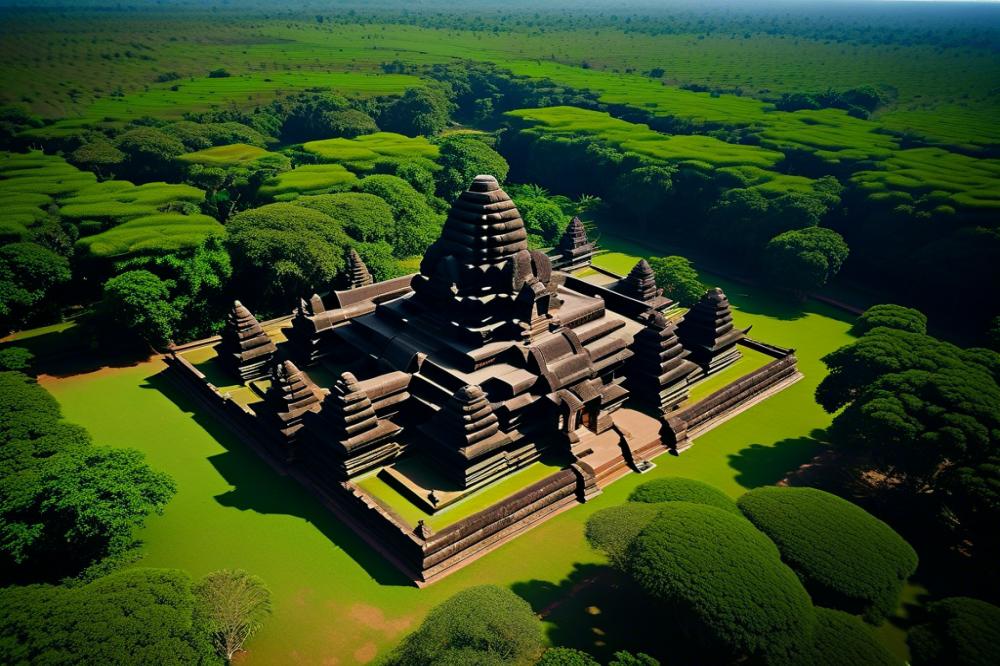
The Roluos Group Temples are significant historical sites located near Siem Reap, Cambodia. These structures date back to the late 9th century and represent some of the earliest monuments of the Khmer Empire. Among them, Bakong, Lolei, and Preah Ko stand out for their remarkable architecture and religious importance.
Bakong
Bakong is considered one of the most impressive temples in the area. It is a large pyramid structure featuring five tiers, which is a distinctive aspect of Khmer architecture. The upper tier boasts a central sanctuary dedicated to the Hindu god Shiva. You will notice many detailed carvings and statues that depict various deities, which speak volumes about its historical relevance. A moat surrounds the temple, adding to its grandeur and helping protect the sacred space.
Lolei
Lolei stands out due to its unique brickwork and intricate carvings. Built on an island in the middle of an artificial lake, it creates a captivating scene. Four towers represent the temple, each adorned with carvings that highlight its dedication to Hinduism. The central tower contains a statue of Shiva, while the others are dedicated to his family. Visitors often admire the well-preserved sandstone reliefs, showcasing scenes from Hindu mythology. The surrounding environment enhances the mystical feel of this ancient place.
Preah Ko
Preah Ko is another significant temple within the complex. It was dedicated in honor of King Indravarman I’s ancestors. This temple features a series of brick towers that rise majestically against the sky. The intricate carvings on the towers display various deities, making it an essential stop for those interested in religious art. While exploring, pay attention to the unique lions that guard the entrances. Their fierce expressions are meant to protect the sanctity of the temple.
The layout of this temple complex serves as a reminder of the kingdom’s past. Each structure is strategically placed, creating a pathway for spiritual journeys. Visitors often feel an overwhelming connection to the ancient world as they walk among these stones. Accordingly, these temples provide a glimpse into Cambodia’s spiritual heritage and the artistry of its ancient architecture.
Visiting the Roluos Group Temples
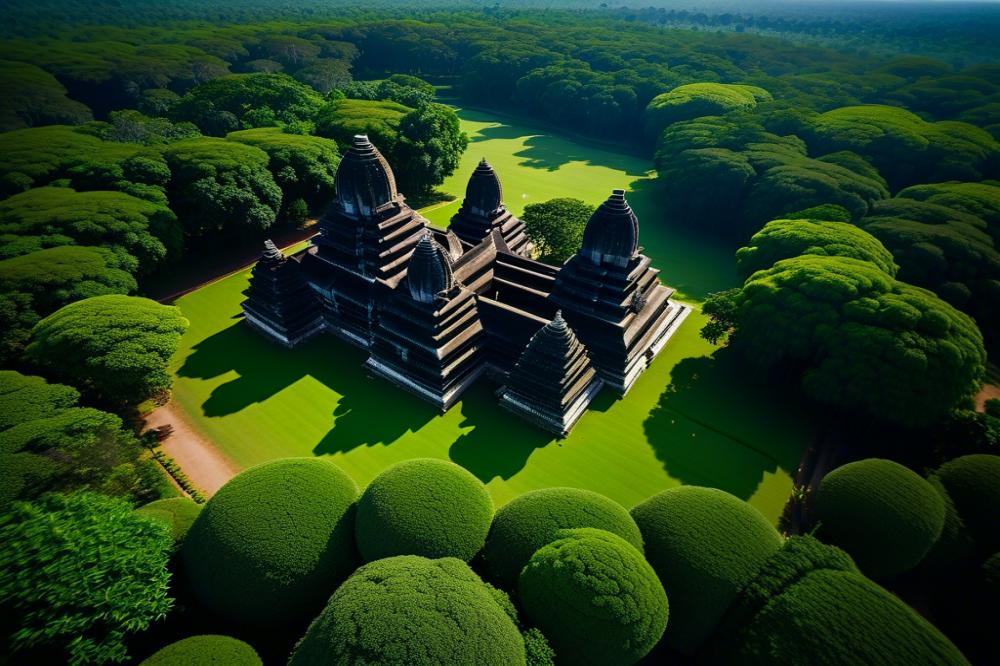
Traveling to these historical sites offers a glimpse into Cambodia’s rich past. The best times to visit are during the cooler months, from November to February. During this period, the weather is pleasant and less humid. Arrive early in the morning to avoid crowds and enjoy a quieter experience. Expect to spend several hours exploring the unique temple complex.
Booking guided tours can enhance your visit significantly. Many local companies offer half-day or full-day excursions that include the Roluos temples. Online platforms often have a variety of options available, so travelers can choose based on their preferences. Additionally, inquire about private tours if a more personalized experience is desired.
Aside from the ancient architecture of Bakong, Lolei, and Preah Ko, consider visiting other nearby sites. Angkor Wat, the most famous temple in Cambodia, is a short drive away and pairs well with the Roluos temples. Including Banteay Srei on your itinerary can also provide a deeper understanding of the region’s history. Every site has its own story to tell.
Connecting with a local guide can greatly enhance your journey. They possess knowledge about the history and cultural significance of each temple. Many guides offer insights into the art and architecture that visitors might otherwise overlook. Look for licensed guides with good reviews to ensure a rewarding experience.
Finally, dress appropriately for temple visits. Lightweight clothing is best, but as a sign of respect, wear long sleeves and pants. Additionally, bring water to stay hydrated, especially as you wander through the warm Cambodian sun. Prepare for an adventure filled with wonders from the past.
Archaeological Tourism in Cambodia
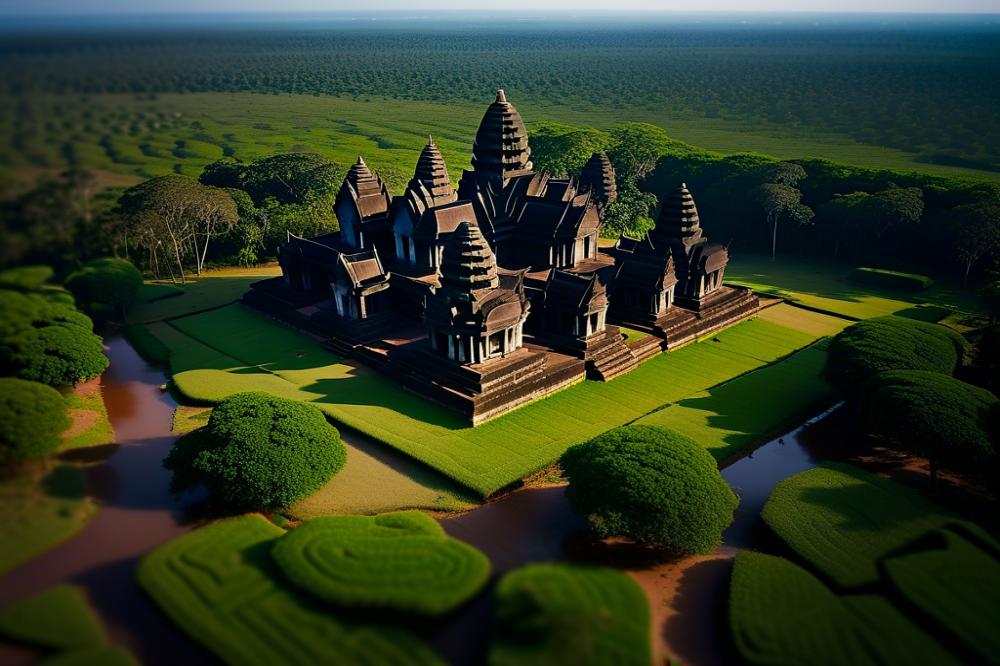
Archaeological tourism plays a significant role in Cambodia’s economy and cultural preservation. The Roluos Group Temples, which include important sites like Preah Ko, Bakong, and Lolei, attract visitors from around the world. These ancient structures showcase remarkable Hindu architecture. Tourists come to explore the rich history and spiritual significance of these sites. Their interest drives local economies, providing jobs and supporting businesses.
Preserving historical sites is crucial. Conservation efforts are needed to protect the temples from natural degradation and the wear caused by large crowds. Special teams focus on restoration and management of these ancient wonders. They combat issues like erosion and moisture damage. Attention to detail helps maintain the original beauty of the temple complex.
However, tourism can have negative effects. Increased foot traffic might lead to deterioration. Visitors often overlook the importance of respectful behavior while exploring. Limited awareness can result in irreparable damage to these structures. By educating tourists about the cultural significance, Cambodia promotes a deeper appreciation for its heritage.
Many organizations work tirelessly to balance tourism and conservation. Their efforts aim to benefit communities while safeguarding ancient architecture. Public initiatives inform travelers about responsible visits. Local guides play an essential role by sharing knowledge and promoting sustainable tourism practices. These endeavors create a more enriching experience for everyone.
In summary, archaeological tourism in Cambodia offers unique opportunities and challenges. Visiting the Roluos Group highlights the beauty of early Khmer civilization. Awareness and education can shape the future of these pristine sites. Encouraging mindful exploration is vital for preservation. Efforts to protect these treasures must continue alongside tourism growth.
Final Thoughts
The Roluos Group Temples hold immense significance in the rich tapestry of Cambodian heritage. These ancient structures offer insights into the early days of the Khmer Empire, long before the grandeur of Angkor Wat emerged. Exploring these sites allows visitors to connect with the roots of a culture that has shaped the region for centuries.
Many who visit these historical temples find themselves captivated by the artistry and architectural feats of the Khmer civilization. Each temple tells a story of devotion, resilience, and innovation. Tourists walking through the ruins experience not only beauty but also a sense of reflection on a bygone era.
As you plan your journey through Cambodia, consider making a stop at these remarkable sites. They are often less crowded than the more famous temples, offering a chance to truly soak in the atmosphere. The quiet moments spent among these stones can be deeply rewarding.
In conclusion, adding the Roluos sites to your travel itinerary enriches your understanding of Cambodian history. By visiting, you contribute to the preservation of these treasures and help support the local community. Embrace the adventure of exploring these ancient marvels; they promise experiences that resonate long after your holiday ends.

